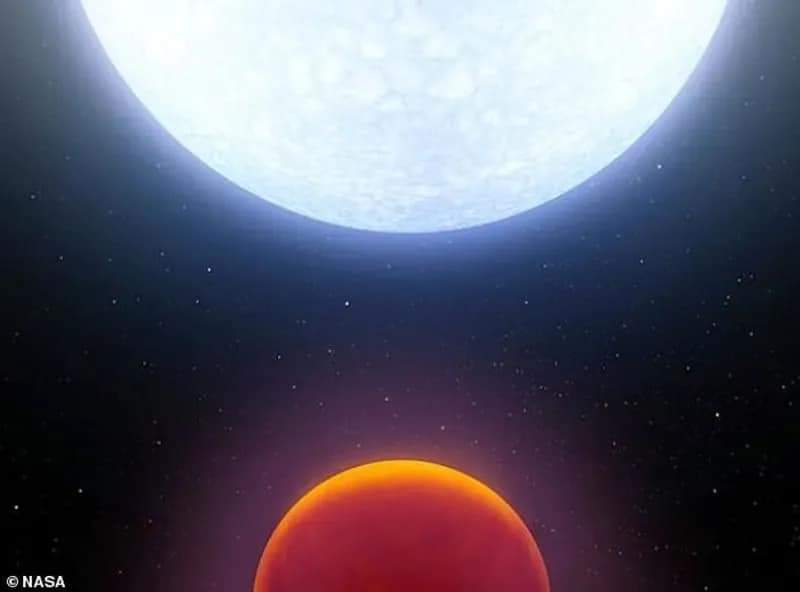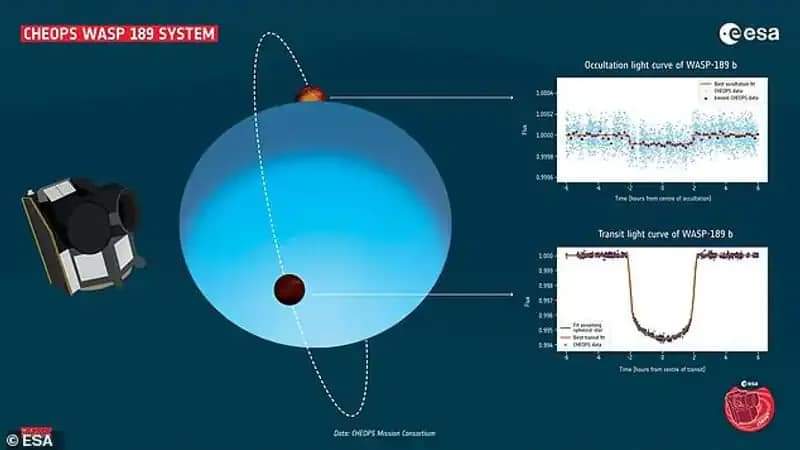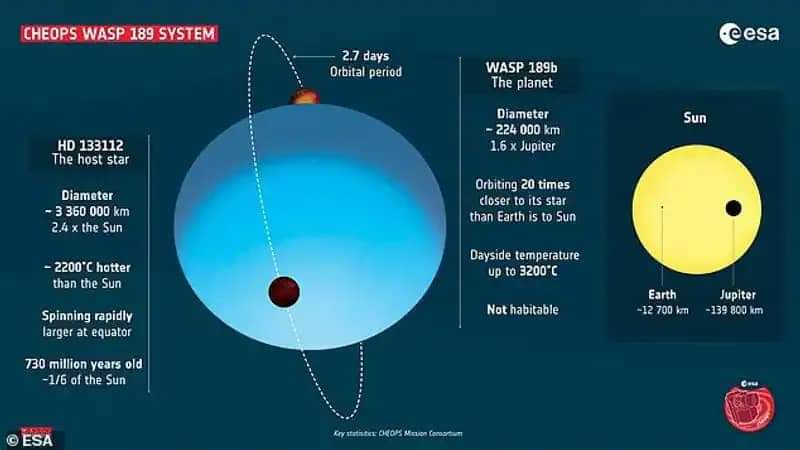
Discovered a planet capable of evaporating iron. It is the hottest man ever discovered in the universe. It is now named WASP-189B. The European Space Agency’s CHEOPS has discovered this with astronomers at the University of Bern using data from the Space Telescope. They studied its orbit, size and temperature. It is 322 light-years from Earth. The planet was discovered by the Wide Angle Search for Planets (WASP) project in 2018, but nothing was clear. They found that Host Star HD 133112 was orbiting it. And then eight months ago, Chioplus followed suit. WASP-189B was the first planet to be tested using an orbiting spacecraft.
This gas giant is about one and a half times the size of Jupiter, with a surface temperature of 5,792 degrees Fahrenheit – compared to Jupiter’s average temperature of -234 degrees Fahrenheit. It takes just three days to orbit its star. Named HD 133112, the star is thought to have a planetary system. Cheops says it is the hottest star. It orbits its star 20 times closer than the Earth orbits the Sun. It’s very different from the gas giants Jupiter and Saturn in our solar system, and they have different angles as the sun rotates.

Planets like WASP-189b are called ‘Ultra-Hot Jupiters’. At such a high temperature, iron melts and becomes gaseous. It is one of the hottest and hottest planets we have ever known.
The day was so bright that the planet was so close to its host star that the team was able to measure the intensity of light as it passed behind the star. Researchers believe that the planet is not very reflective because there are no clouds during the day.
‘Let us conclude that the star rotates so fast that its shape is no longer spherical; But may be elliptical. It’s pulling the star out of its equator. ‘ Says astronomer Benz. Because it is so hot, the star appears blue, not yellow-white like the Sun. Willie Benz said: ‘Few planets know how to orbit such hot stars, and this system is by far the brightest. The star itself is interesting – it’s not perfectly circular, it’s bigger than the poles and cooler at the equator, which makes the star’s poles appear brighter, ‘says Lendl. ‘It spins so fast it pulls out to its equator! The orbit of WASP-189 b is inclined; It does not orbit the equator, but approaches the poles of the star. ‘

This oblique orbit increases the current mystery of how Jupiter is formed – for a planet to have such an oblique orbit it must be further formed and pushed into the star, astronomers explained.
When we estimate a slope using CHEOPS, it indicates that WASP-189b has been subjected to such interventions before, ” Lendl adds. As a result, it becomes a benchmark for further studies, says Kate Isaac, a Chioplus project scientist at ESA.
Thousands of exoplanets have been discovered since 1995, and more are expected to be discovered from space and underground missions in the coming years. Chioplus has a special role to play in the study of such exoplanets, which will search for the transits of planets found in the solar system and accurately measure their sizes. “By tracking the exoplanets into orbit with cheopes, we can show the early stage characteristics of their atmosphere and determine the presence and characteristics of any existing clouds,” Isaac added.





Recent Comments